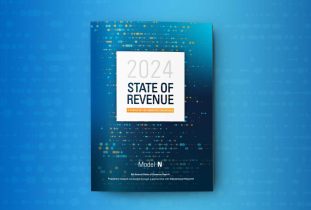Pharmaceutical firms in Europe are at a major inflection point. In the past two decades—during which time they suffered through the 2008 global financial crisis and the COVID-19 pandemic—drug manufacturers have more than doubled production, increased exports six times, and earned a trade balance much higher than those of other European high-tech sectors.
But today, with inflation rising to more than 7% across Europe is on top of other worries for drug makers, including 65% increase in gas and 30% in electricity; transportation expenses (increasing up to 500%) and manufacturing input costs (increasing 50% to 160%).
This makes having the right pricing strategy more important than ever. Here are three ways to meet today’s pricing challenges in Europe.
1. Ensure collaboration to optimize reference pricing with a central data repository
Since the 1990s, members of the European Union (EU) have imposed cost containments measures on the continuously growing expense of providing pharmaceuticals to the public through their national health services.
One of the most common tools used by government agencies to control pricing of in-patent drugs (drugs protected by intellectual property rights to benefit legal monopolies) is
IRP is when governments impose restrictions and rules affecting the price of a medication in one country by comparing with the price in a “basket” of other, “reference” countries.
For example, drug prices in Bulgaria cannot be higher than the lowest price of the same product in any of 10 reference countries: Belgium, France, Greece, Italy, Latvia, Lithuania, Romania, Slovakia, Slovenia, and Spain. That means that price changes in any reference country can trigger a price drop in Bulgaria. Each EU country has different rules and regulations regarding IRP.
IRP is one of a number of typical policy types used by EU countries—including statutory pricing, negotiations between countries and pharmaceutical companies, and price-volume agreements—to establish prices, Most countries also evaluate the “innovation” as a key determinant of value. The effectiveness of a drug—how substantially it improves health outcomes—is also a prime consideration throughout the EU. Germany is the only EU country that allows mostly free pricing of in-patent drugs by manufacturers.
What this means to pharmaceutical companies: continuous and deep collaboration is required, both externally—across competitors and country and regional regulatory bodies—as well as internally, among pricing, market access, supply chain, and finance functions.
To do this adequately, pharma companies must create a single repository of trusted and reliable information on referencing rules, up-to-date prices on all reference countries, and market-access information.
This data repository must also track all pricing discussions and decisions throughout all pricing negotiations, so that stakeholders within the company are always kept apprised of the current status of the pricing mechanisms in place.
Without such a repository, pharma firms could make pricing errors or miscalculations that could have significant long-term effects—not just for a specific company, but across the industry because of the interconnected nature of global pricing.
2. Leverage sophisticated tools to make informed pricing decisions
Happily, there is a broad choice of tools with which to build such repositories and fulfill other requirements of global pharmaceutical pricing. Leading pricing vendors offer global pricing management tools that allow you to track and govern prices, optimize launch sequences, simulate IRP events, and derive insights.
When looking for such an application, you should make sure it has:
- Reference pricing simulation that proactively drives pricing policies by monitoring pricing and reimbursement events
- Price and sales forecasting that improves performance with visibility into internal prices and competitors’ pricing trends
- Price controls that increase responsiveness by efficiently responding to price change requests
- Global launch excellence calculator that helps you create realistic launch sequences by combining accurate price data, volume forecasts, and optimization algorithms.
3. Gain a deep understanding of your competitors’ positioning, strengths, and past behaviors
A final success factor is to perform regular competitor analyses. Without doing this, you have no way of understanding your competitors’ current behavior and potential actions. By basing data-driven decisions at least partly on your competitor’ strategies, you’ll have the insight you need to perform long-term competitive planning that will help you thrive in the complex and always-changing pharmaceutical universe.
Understanding competition is critical not only when preparing to go to market, but during development, as you must put a lot of effort into researching what potential competitors exist for your products in the laboratory.
Despite the importance of doing this, most pharma companies only perform information assessments of competitors, much of it based on snippets of anecdotal information conveyed by sales representatives. These superficial judgments can cause you to miss important developments in the market that can be serious competitive threats.
The benefits that accrue from performing regular competitive analyses include:
- Deep comprehension about market dynamics
- Ability to identify and locate the right customers
- Insight into macro- and microeconomic conditions
- Capability to forecast demand for new products
- Advanced knowledge of competitors’ product or pricing strategies
However, to reap these benefits, it’s important to build and nurture an internal team—preferably multidimensional—to build in-house expertise in competitive planning and not just rely on external competitive intelligence dealers. Although the data that such dealers produce is extremely valuable, you need a framework and method for fully exploiting that data, a software solution that can utilize the data to drive insights.
The right pricing software makes all the difference
Pricing can determine whether a product sinks or earns back the R&D investment you made in it. In Europe, this is complicated by complex regulation and the use of reference pricing. You need sophisticated tools—including a central repository for all data, and in which decisions and actions taken are also recorded. You also need to stay on top of what competitors are doing.
Model N delivers an end-to-end platform empowering pharmaceutical companies to maximize revenue as they transform sales, marketing, channels, finance, and legal processes.
For more information about Model N’s global pricing solution, visit here.
















